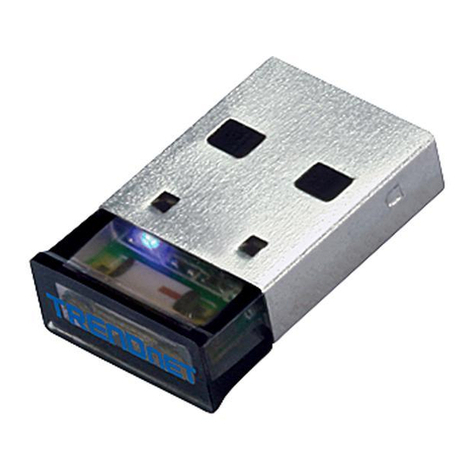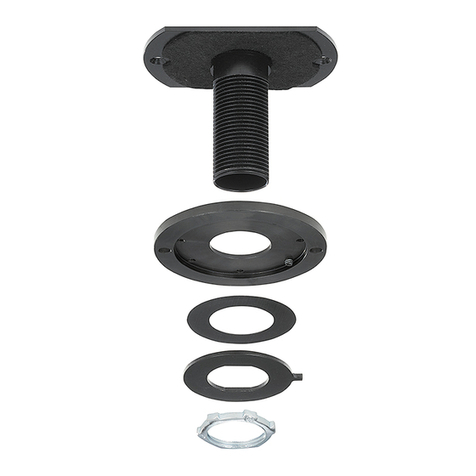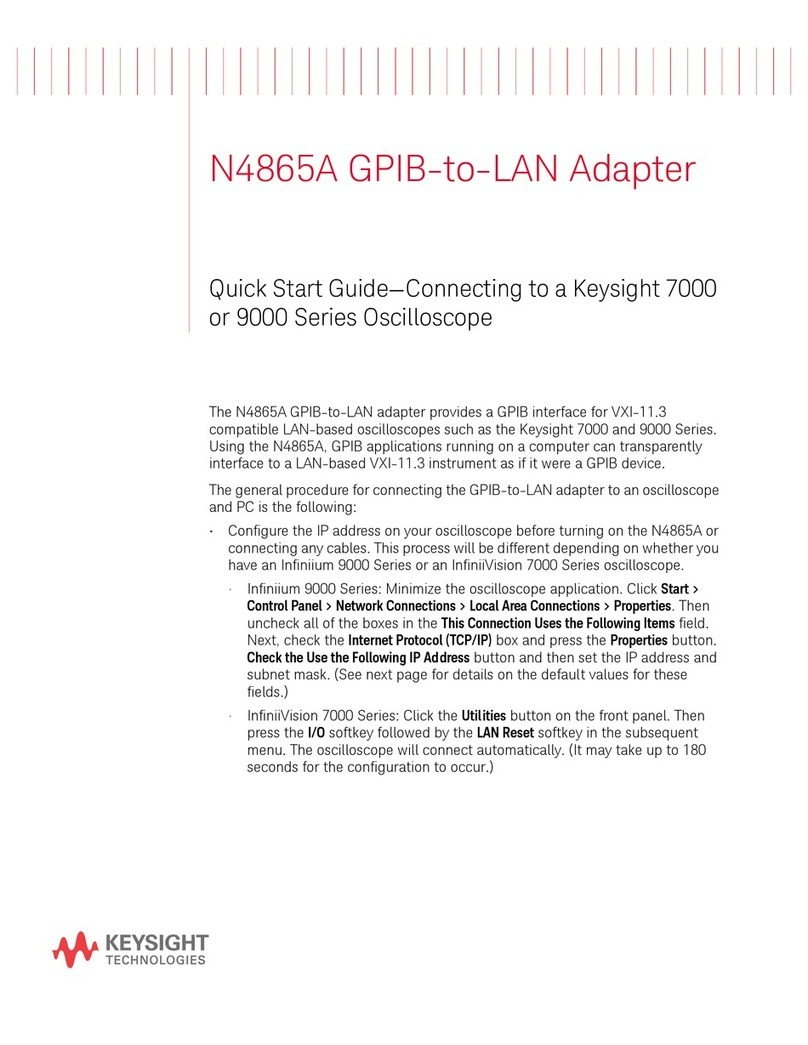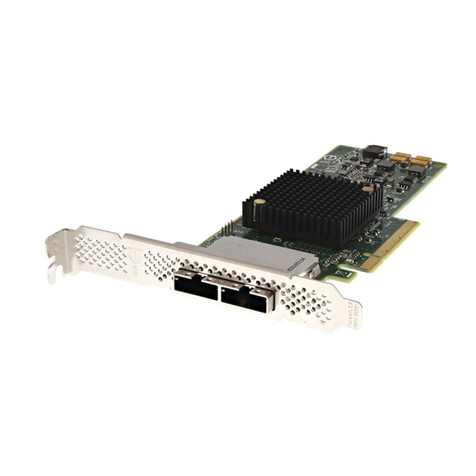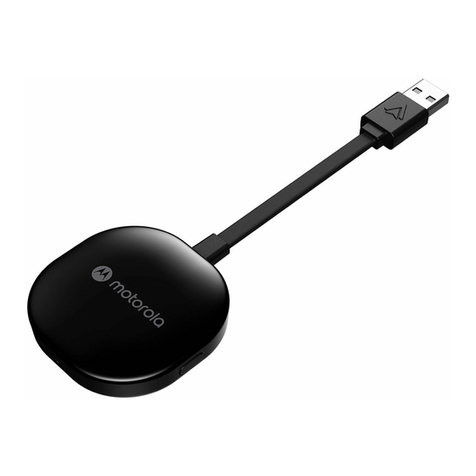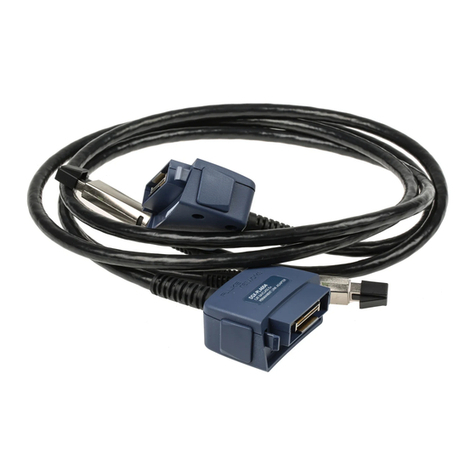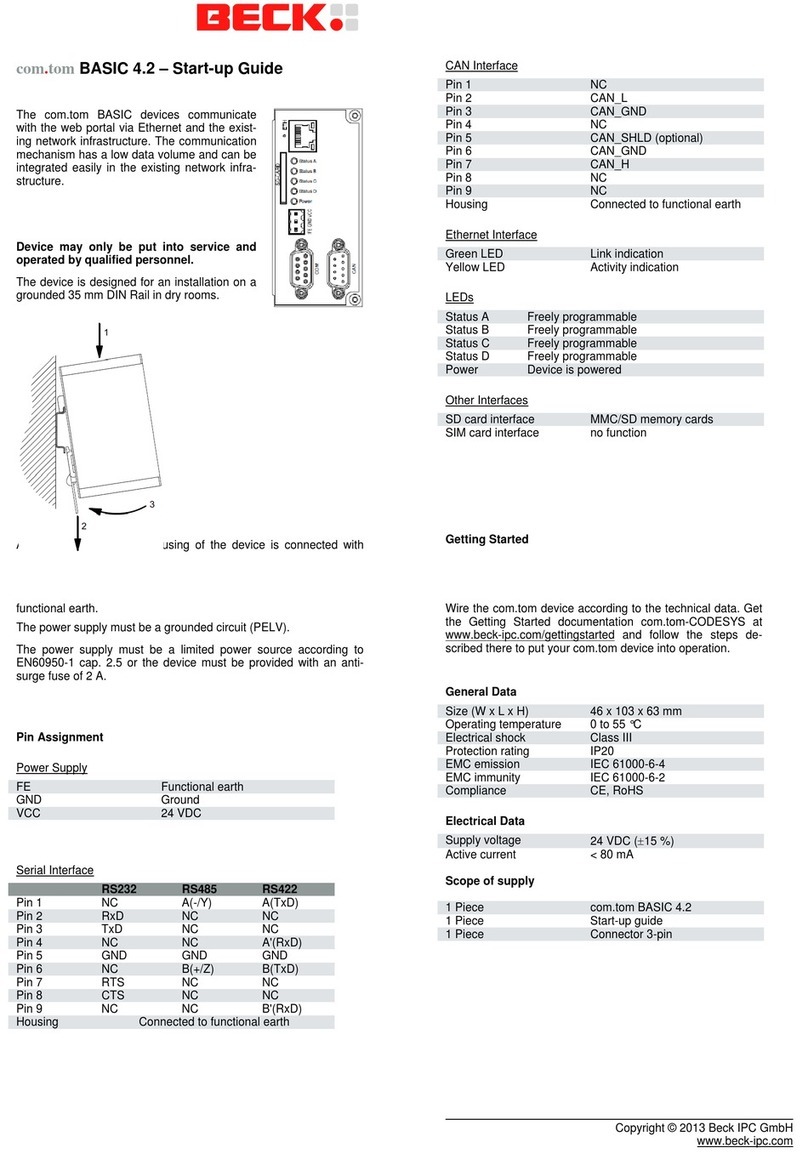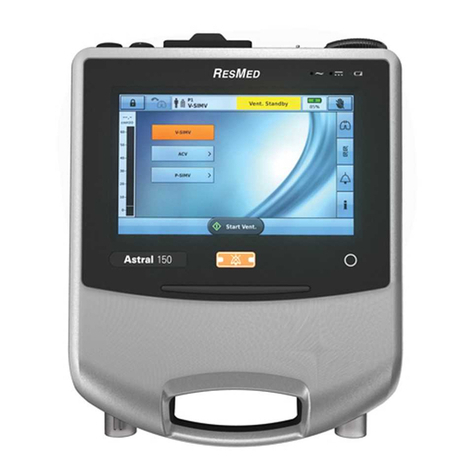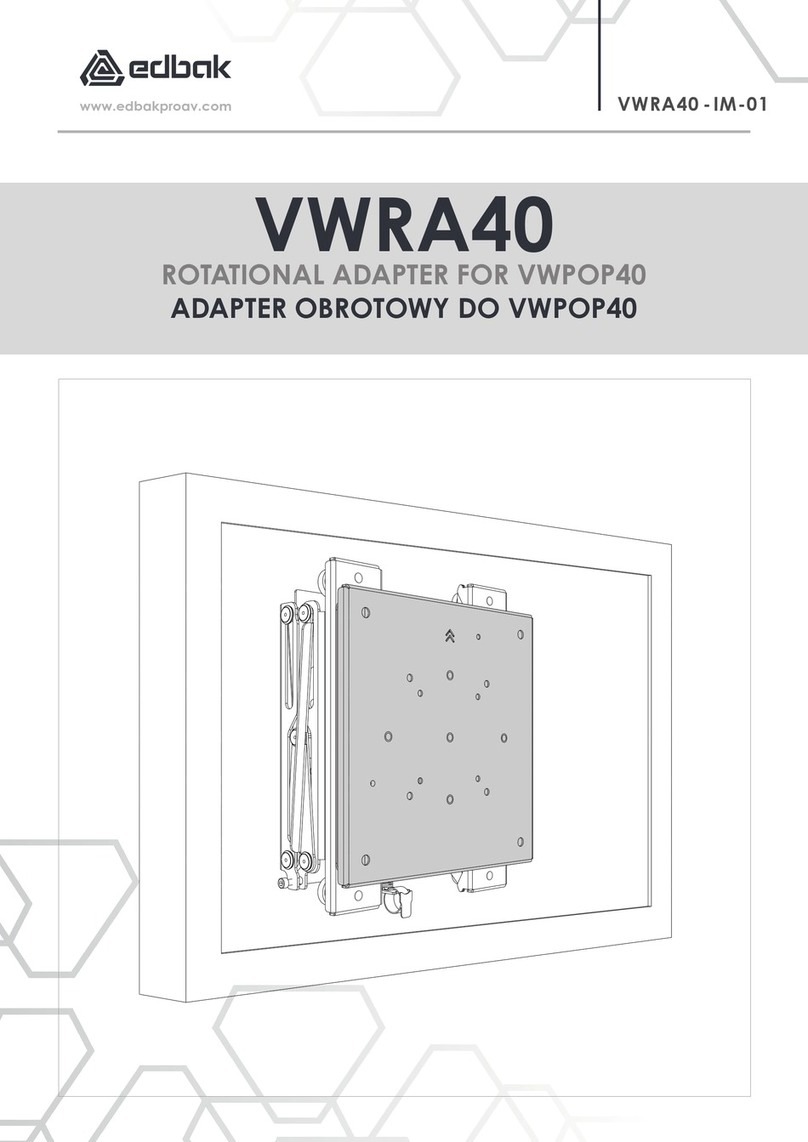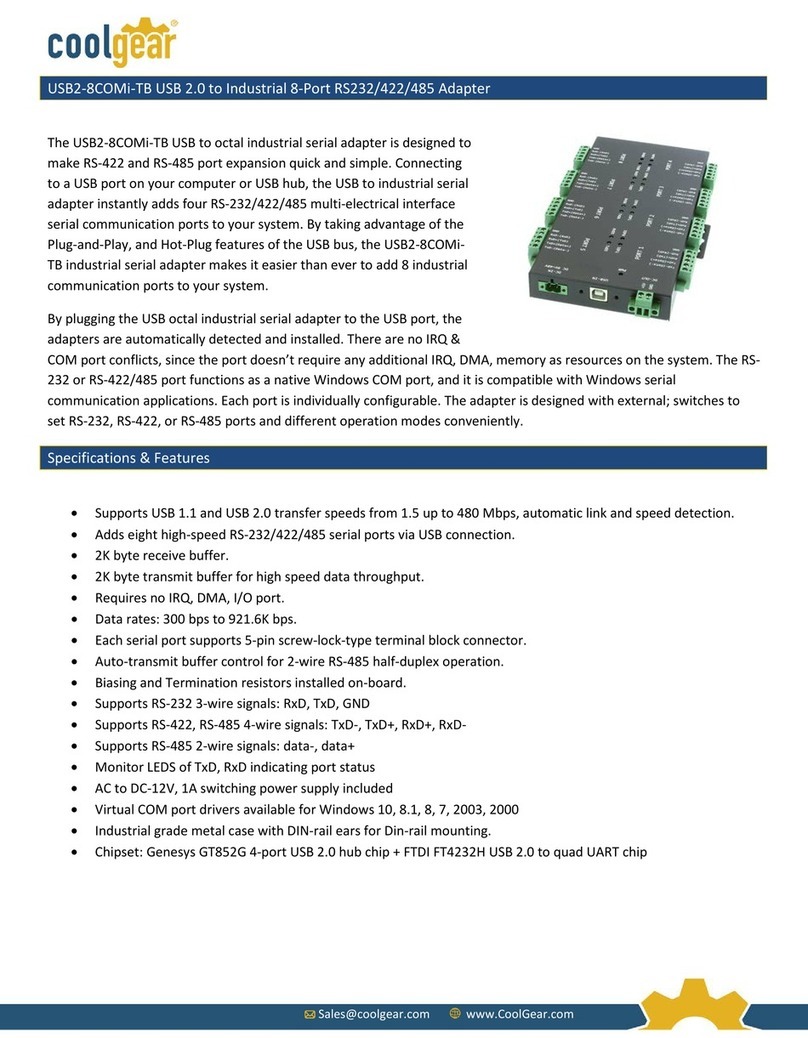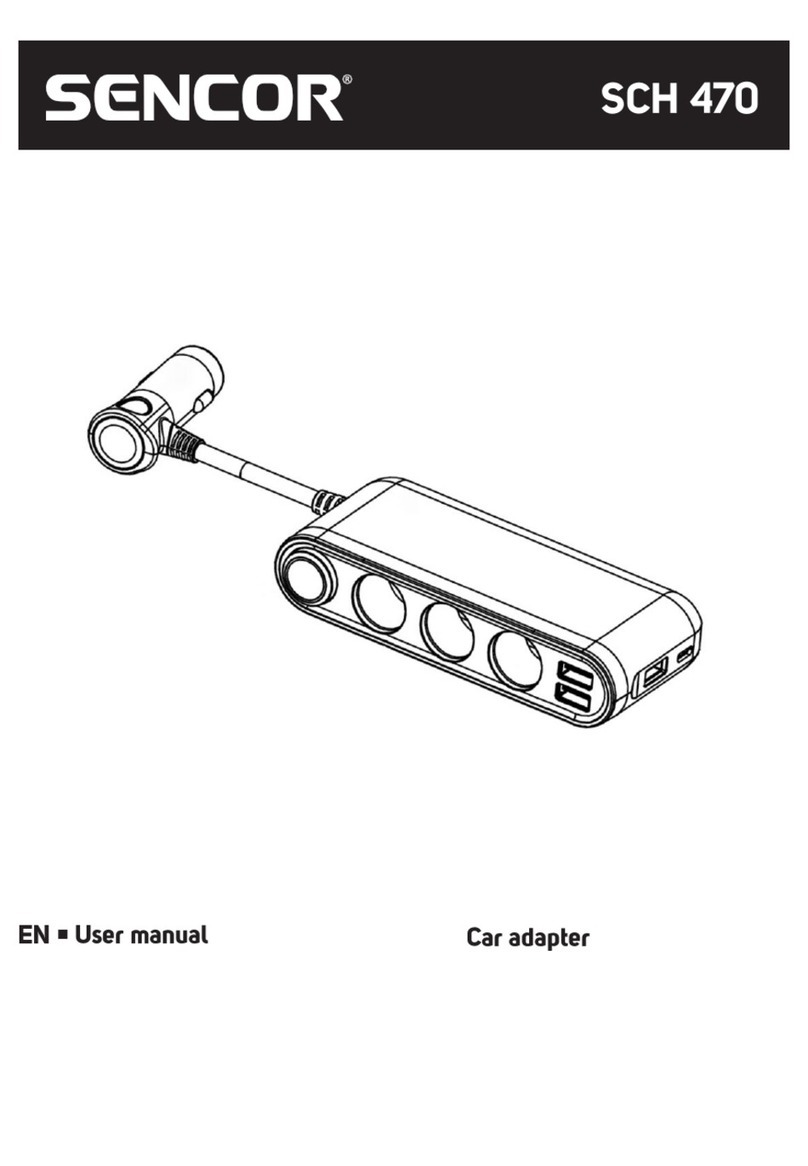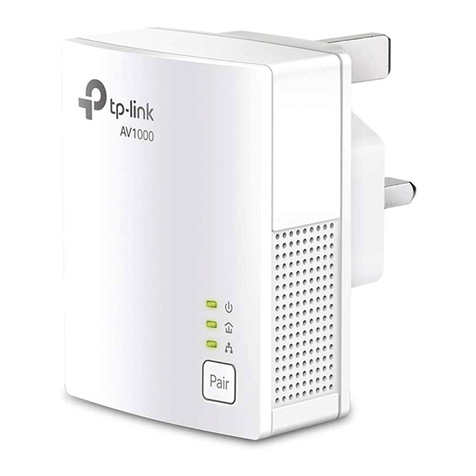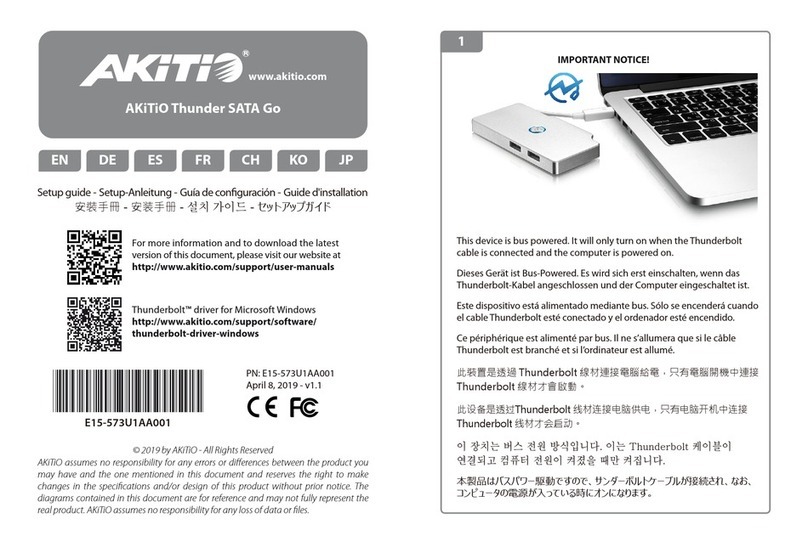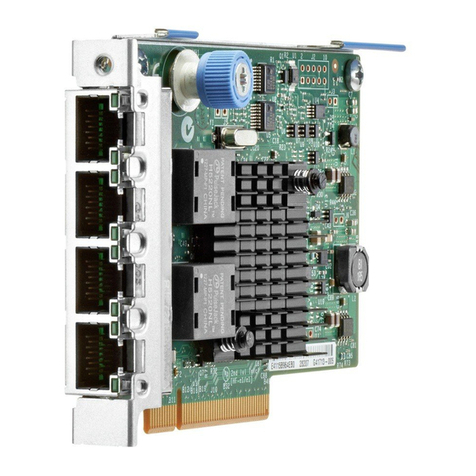Viking ATA-100 Instructions for use

The ATA-100 is an analog telephone adapter
that connects an analog telephone device to
an IP network, enabling SIP-supported VoIP
communication in applications where con-
necting to an existing FXS port is not possible
or practical. In addition, the ATA-100 has an
RJ-11 port for switching to the PSTN analog
phone network via touch tone commands.
Device programming is handled by a built-in
web browser. IP address assignment can be accomplished either by DHCP or by man-
ually assigning a static IP address. The ATA-100 can be used with or without SIP regis-
tration. If unregistered, the ATA-100 can perform basic tasks like sending voice data to
an IP-PBX or to another device on a LAN. SIP registration opens up an impressive list
of calling features and also enables internet telephone calling.
For Technical Support: Please contact
Cortelco at (800) 288-3132 Ext. 298
Provide an IP Network Connection for
Analog Telephone Devices
• Supports SIP 2.0(RFC 3261), TCP/UDP/IP,
RTP/RTCP, HTTP, ICMP, ARP, DNS, DHCP,
NTP, PPPoE, STUN, TFTP, etc.
• Powerful digital signal processing (DSP) to
ensure superb audio quality.
• Supports various codecs including G.711 (a-law
and u-law), G.723.1 (5.3K/6.3K), and
G.729A/B
• Supports out-of-band DTMF via RTP
(RFC2833) or SIP INFO.
• Supports Caller ID/Name display.
• Supports Call Hold, Call Waiting/Flash, Call
Transfer, and Call Forward.
• Supports automated NAT traversal without
manual manipulation of firewall/NAT
• Supports QoS
• Supports device configuration via built-in IVR
or Web browser
• Supports firmware upgrade via FTP
P
Pr
ra
ac
ct
ti
ic
ce
e
T
TE
EL
LE
EC
CO
OM
MS
SO
OL
LU
UT
TI
IO
ON
NS
SF
FO
OR
RT
TH
HE
E2
21
1S
ST
TC
CE
EN
NT
TU
UR
RY
Y
TECHNICAL
TECHNICAL
F
Fe
ea
at
tu
ur
re
es
s
S
Sp
pe
ec
ci
if
fi
ic
ca
at
ti
io
on
ns
s
• Link between an analog phone or doorbox and
an IP-PBX
• Voice communication on analog phones
between two networked locations (requires
two ATA-100’s)
• VoIP internet calling
• Internet enabled kiosks
A
Ap
pp
pl
li
ic
ca
at
ti
io
on
ns
s
ATA-100
ATA-100
Analog Telephone
Adapter
March 10, 2008
Power: 100-240V AC, 50-60 Hz 0.3A, power cord supplied
WAN Interface: 1xRJ45 100Base-T
LAN Interface: 1xRJ45 100Base-T
FXS Telephone Port: 1xRJ11
PSTN Port: 1xRJ11
LED: VoIP/PSTN, POWER (The POWER LED is green. The
VoIP/PSTN LED is bicolor yellow/green.)
Dimensions: 118mm (W) x 74mm (D) x 28mm (H)
Shipping Weight: 0.45 kg (1 lb)
Temperature: 0°C to 40°C
Humidity: 10% to 95% (noncondensing)

IF YOU HAVE A PROBLEM WITH THIS PRODUCT, PLEASE CONTACT:
CORTELCO TECHNICAL SUPPORT AT (800) 288-3132 EXTENSION 298
FCC PART 14
Warning: Changes or modifications to this unit not expressly approved by the party responsible for compliance could void the user’s authority to operate
this equipment.
Note:This equipment has been tested and found to comply with the limits for a Class B digital device, pursuant to Part 15 of the FCC Rules. These limits
are designed to provide reasonable protection against harmful interference in a residential installation. This equipment generates, uses and can radiate
radio frequency energy and, if not installed or not used in accordance with the instructions, may cause harmful interference to radio communications.
However, there is no guarantee that interference will not occur in a particular installation. If this equipment does cause harmful interference to a radio or
television reception, which can be determined by turning the equipment off and on, the user is encouraged to try to correct the interference by taking one
or more of the following measures:
• Reorient or relocate the receiving antenna.
• Increase the separation between the equipment and receiver.
• Connect the equipment to an outlet on a circuit different from that to which the receiver is connected.
• Consult the dealer or an experienced radio/TV technician for help.
Notes: This device complies with part 15 of the FCC Rules. Operation is subject to the following two conditions: (1) The device may not cause harmful
interference, and (2) This device must accept any interference received, including interference that may cause undesired operation.
Model: Analog Telephone Adaptor - 821121-ATA-PAK
The responsible party: Cortelco 1703 Sawyer Road, Corinth, MS 38834 Tel: (662) 287 5281
G
Gl
lo
os
ss
sa
ar
ry
y
• ATA: Analog Telephone Adapter. A device that acts as a bridge between an analog telephone and a network, making
VoIP possible. ATA’s have an RJ-11 jack for connection to the telephone or other analog device and an RJ-45 jack for con-
nection to the network.
• DHCP: Dynamic Host Configuration Protocol. This is the set of rules by which a network server automatically assigns an
IP Address to a Host. Additional details of the configuration, including Subnet Mask and Default Gateway are relayed to the
host as well.
• DNS Server: A DNS (Domain Name System) server uses DHCP to automatically assign an IP Address to a Host.
• Default Gateway: A device that routes network traffic between different Subnets or networks. This is one of the pieces
of information needed to manually set an IP Address.
• Dynamic IP address: An address supplied by a DNS Server using DHCP protocol. This type of address is assigned a
Lease which can expire if the address is not used within the period of lease.
• Ethernet: Ethernet is the most commonly used LAN technology. An ethernet Local Area Network typically uses coaxial
cable or twisted pair wires to achieve transmission speeds up to 10Mbps, 100Mbps or 1000Mbps.
• FXO: An FXO port acts like an analog trunk port. It receives talk battery and ring voltage, and provides on hook / off hook
indication. It could have an analog phone line plugged into it, or a Viking product that is designed to be connected to a spare
analog trunk port.
• FXS: An FXS port is like a station port on an analog phone system. It provides talk battery, dial tone and ring voltage.
Analog telephone equipment like phones and fax machines can be plugged into an FXS port.
• Hardware Address: See MAC Address.
• Host: A computer or device connected to a network.
• Internet: A worldwide system of computer networks running on IP protocol which can be accessed by individual com-
puters or networks.
• IP: Internet Protocol is the set of communications conventions that govern the way computers communicate on the net-
works and on the Internet.
• IP Address: This is the address that uniquely identifies a Host (computer or device) on a network.
• LAN: Local Area Network. A LAN is a network connecting computers and other devices within an office or building.
2

• Lease: The amount of time a DNS Server reserves an address it has assigned. If the address isn’t used by the Host for
a period of time, the lease can expire and the address can be assigned to another host.
• MAC Address: MAC stands for Media Access Control. A MAC address, also called a Hardware Address or Physical
Address, is a unique address assigned to a device at the factory. It resides in the device’s memory and is often printed on
the outside of the device. It is used by Routers to send network traffic to the correct IP Address. Example 00-0B-82-12-0C-
48
• Network Administrator: The person responsible for setting up and maintaining a network. The network administrator’s
job includes making sure that space is available on the file server, that the file server is backed up regularly, that new
employees can access the network, troubleshooting network problems and other tasks.
• Physical Address: See MAC Address.
• Router: A device that forwards data from one network to another. In order to send information to the right location, routers
look at IP Address, MAC Address and Subnet Mask.
• SIP: SIP (Session Initiation Protocol) is an IP telephony signaling protocol primarily used for VoIP calls but which can
also be used for video or any media type. SIP establishes sessions using these technologies and deploys them over IP net-
works, enabling service providers to integrate basic IP telephony services with internet, email and chat services. SIP servers
also support traditional telephony features like call forwarding.
• Static IP Address: A static IP Address has been assigned manually and is permanent until it is manually removed. It is
not subject to the Lease limitations of a Dynamic IP Address assigned by the DNS Server.
• Subnet Mask: A type of address filter used by Routers to send data to the correct location. This is one of the pieces of
information needed to manually set an IP Address.
• VoIP Gateway: This is a generic term that covers a variety of devices, all of which at some point act as digital-to-analog
converters. The essential function of a VoIP gateway is to convert an analog voice signal to digital information so it can be
sent out on a network, making VoIP possible. This conversion function is often built into other devices like routers or
cable/DSL modems. If the gateway’s only function is to convert digital to analog and vice versa, it is called an ATA.
• WAN: Wide Area Network. A WAN is a network comprising a large geographical area like a state or country. The largest
WAN is the Internet.
3
1. Let your network administrator know that you would like to install the ATA-100 and ask him to supply you with a static
IP address. If this is not a possibility, the ATA-100 can still be installed with a dynamic IP address, but a static address
is preferred.
2. The ATA-100 is manufactured by Cortelco with the model number 8211. Download the Cortelco 8211 manual, which is
available at www.cortelco.com. Follow the instructions provided in the Cortelco 8211 manual. The information that
follows expands on Cortelco’s installation instructions.
3. If using a static IP address:
I
In
ns
st
ta
al
ll
la
at
ti
io
on
n
• The Cortelco leaves the factory with a default static IP address of 192.168.1.100, and it is likely that this address is
not in the same subnet as the static IP address you got from your network administrator. If this is the case, when you
open your web browser to the default address, you will not reach the programming page. To work around this, follow the
instructions to use DHCP to get a dynamic IP address, and write down the address as it is spoken in the handset of the
phone by the Cortelco. Open your browser to this address, andadd “:9999/“ (the instructions show an example). When
the login page appears, you will need to enter a user name and password (the default settings are in the instructions).
When the programming page appears, mouse over “Network” on the left, about halfway down the page, then click on
“Network Settings”. At the top of the Network Settings page, by “IP Type” click on “Fixed IP”. On the next line, in the box
labeled “IP” enter the static IP address you got from your network administrator. Click on the “Submit” button at the bot-
tom of the page. Then near the bottom on the left click on “Save Change” and when the “Save” button appears, click on
it. The Cortellco reboots automatically; give it a minute or so. You have successfully assigned a static IP address to the
Cortelco.
• You can change any of the settings on the programming page by opening your browser to the IP address you just set.
Just remember to save changes and wait for reboot.

S
SI
IP
PR
Re
eg
gi
is
st
tr
ra
at
ti
io
on
n
4. If using DHCP to get a dynamic IP address:
5. See the Cortelco 8211 manual for a more complete description of the features and programming options available.
4
If you are using the ATA-100 in a VoIP application that involves calling numbers that are outside your LAN, or if you will be
calling extensions on a server that is running SIP protocol, you will need to register the ATA-100 as a SIP client. This
involves setting up an account with a VoIP service provider and following the registration instructions they provide.
www.freeworlddialup.com (FWD) provides SIP registration at no charge. You can place free internet calls to other FWD
users, or by dialing prefix numbers, to other users in cooperating networks. Connection to the PSTN (public switched tele-
phone network) is available for a monthly fee.
• Follow the instructions to use DHCP to get a dynamic IP address and write down the address as it is spoken in the
handset of the phone by the Cortelco. Should it ever become necessary to make programming changes or additions,
this can be done by accessing the the unit via a web browser. Just type in the dynamic IP address ( the instructions show
an example). When the login page appears, you will need to enter a user name and password (the default settings are
in the instructions). When finished, remember to save changes and wait for reboot.
Due to the dynamic nature of the product design, the information contained in this document is subject to change without notice. Viking Electronics, and its affiliates and/or subsidiaries assume no respon-
sibility for errors and omissions contained in this information. Revisions of this document or new editions of it may be issued to incorporate such changes.
Fax Back Doc 234
ZFXXXXXX Rev 2
Printed in the U.S.A.
P
Pr
ro
od
du
uc
ct
tS
Su
up
pp
po
or
rt
tL
Li
in
ne
e.
..
..
.7
71
15
5.
.3
38
86
6.
.8
86
66
66
6F
Fa
ax
xB
Ba
ac
ck
kL
Li
in
ne
e.
..
..
.7
71
15
5.
.3
38
86
6.
.4
43
34
45
5
Model
ACA-1A
ACD-10
AES-2000
AES-2005
C-1000B
C-4000
CPA-7B
CPC-1
DNA-510
DVA-1003B (3)
DVA-3003 (3)
DVA-500A
DVA-LPA
DVA-TNT
E-10A, 20B
1600A Series
E-30/E-35
E-40 Series
E-50 Series
EV-1
DOD#
005
085
202
204
168
164
455
442
492
125
127
115
128
129
210
215
212/178
187
191
135
Model
LSD-2
LSR-1
PA-2A*
PA-30*
PB-100
PF-6A (6)
PI-1*
RAD-1A
RAD-AMP
RC-2A
RC-3
RG-10A
SR-1
TBB-1A
TMS-2 (2)
TMS-6X (6)
TMS-12A (12)
TR-1
VR-1A
ZPI-4
DOD#
262
230
485
489
232
680
490
410
415
160
165
420
477
630
062
065
070
705
695
499
C
Co
om
mp
pa
at
ti
ib
bl
le
eV
Vi
ik
ki
in
ng
gP
Pr
ro
od
du
uc
ct
ts
s
Model
FAXJ-1000
K-1200/K-1205
K-1500-6A
K-1500-E
K-1500-EHFA
K-1500P-D/ASH
K-1500P-W/ASH
K-1700-3/K-1705-3
K-1900 SERIES
K-1900-3
K-202-DVA
K-2000-DVA
K-600D
LC-8
LDB-1
LDB-2
LDB-3
LLA-1
LLA-4
LS-4X4
DOD#
261
182/183
352
220
220
355
355
157/159
360
312
305
303
475
225
406
408
409
615
620
270
* Note: Loud ring only- paging requires a RAD-1A.
(#) Note: # of required ports.
Table of contents
Other Viking Adapter manuals
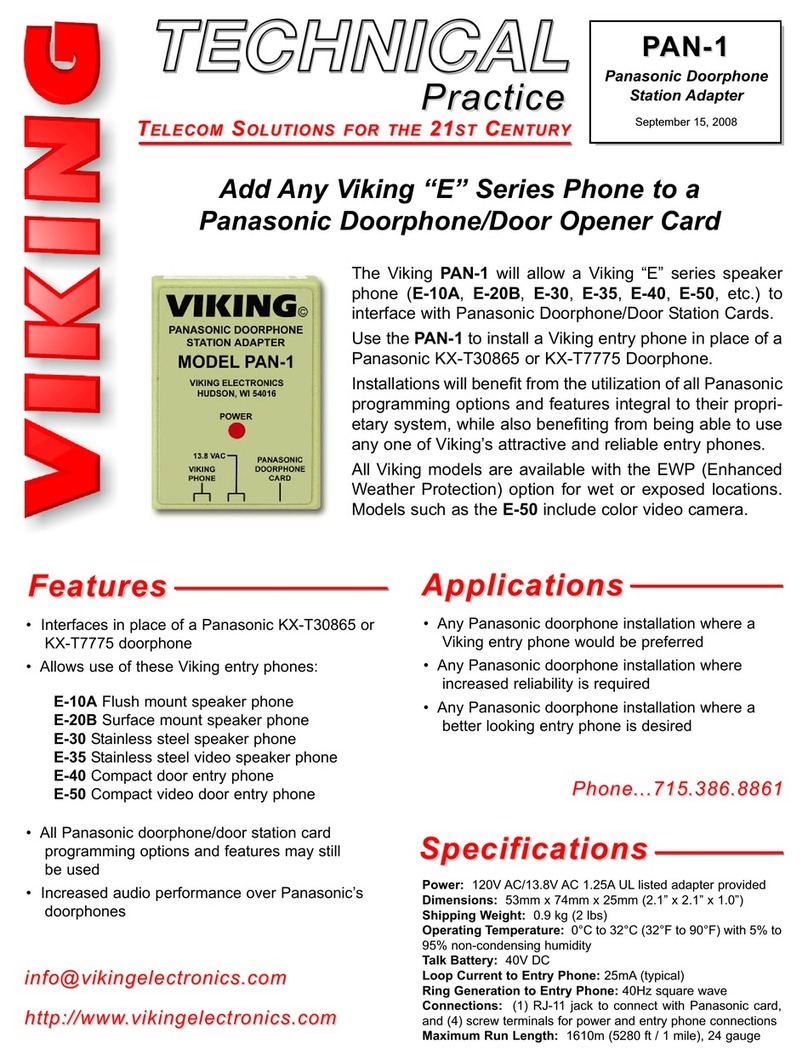
Viking
Viking E-40 Series Instructions for use
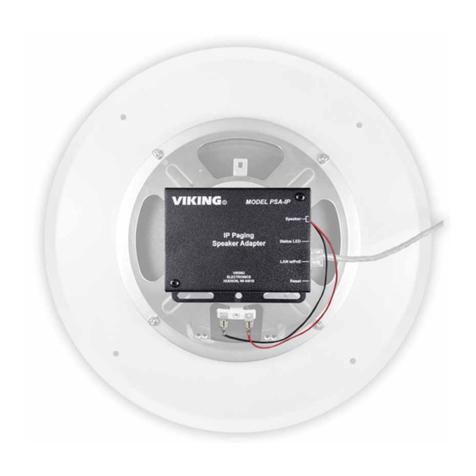
Viking
Viking PSA-IP User manual
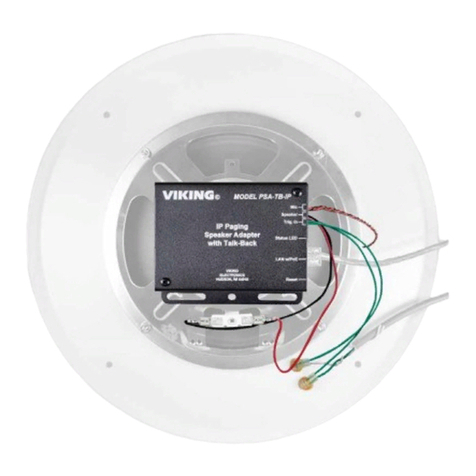
Viking
Viking PSA-TB-IP User manual
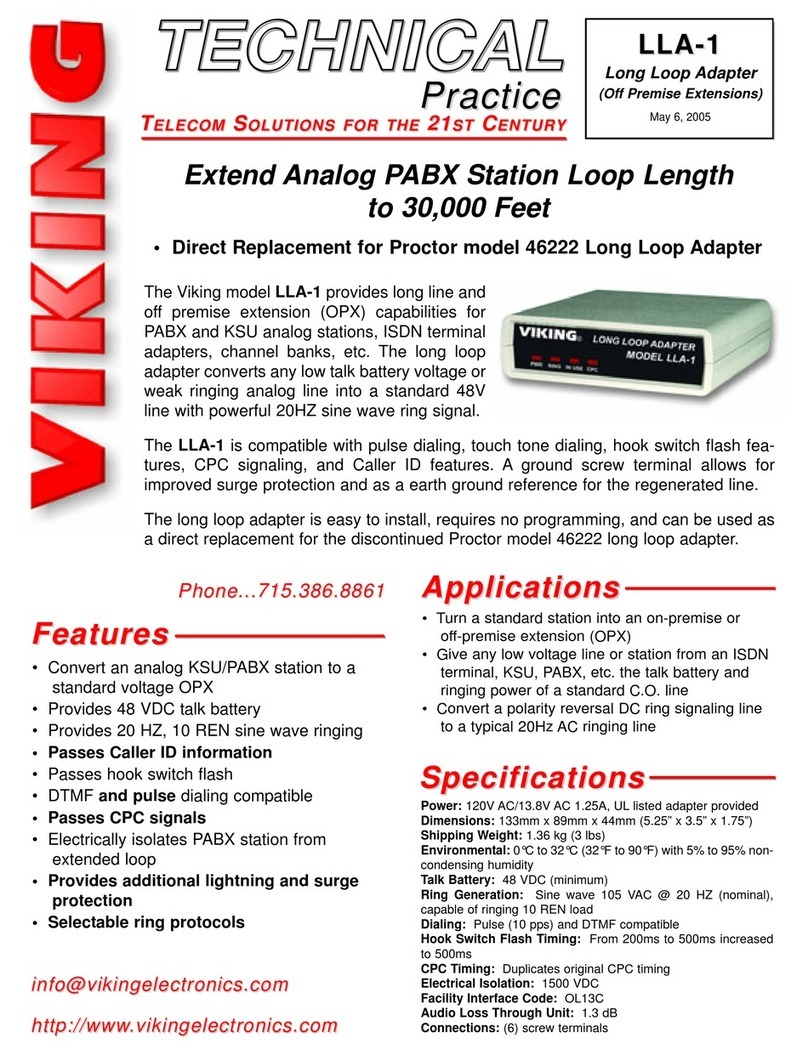
Viking
Viking DLE-200B Instructions for use
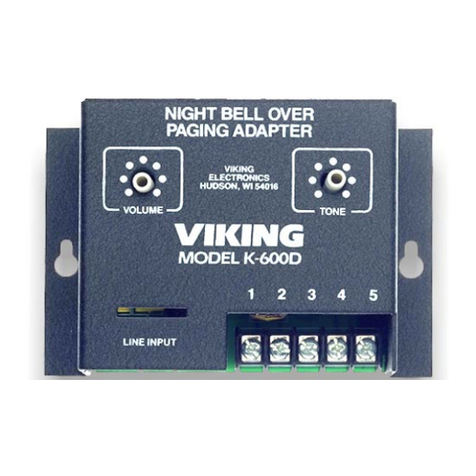
Viking
Viking K-600D Instructions for use
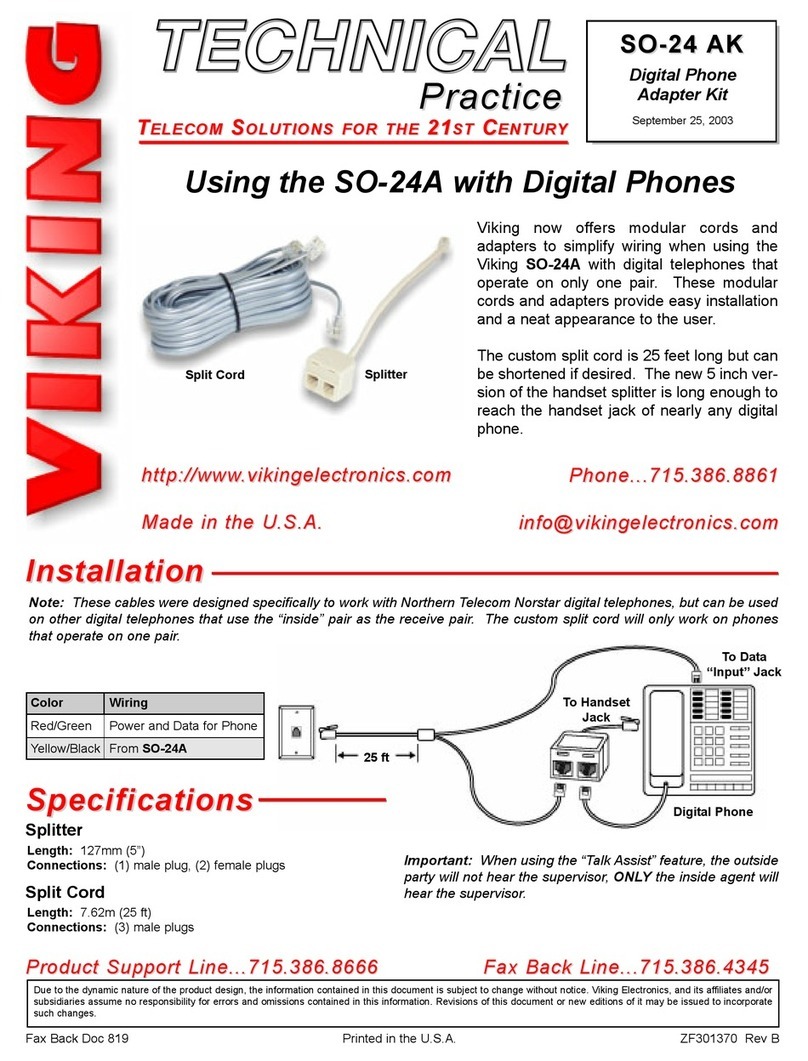
Viking
Viking SO-24A Instructions for use
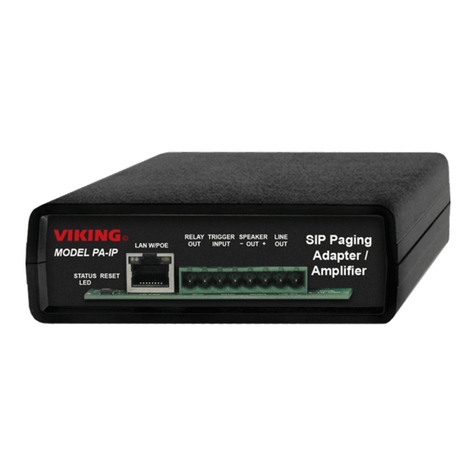
Viking
Viking PA-IP User manual
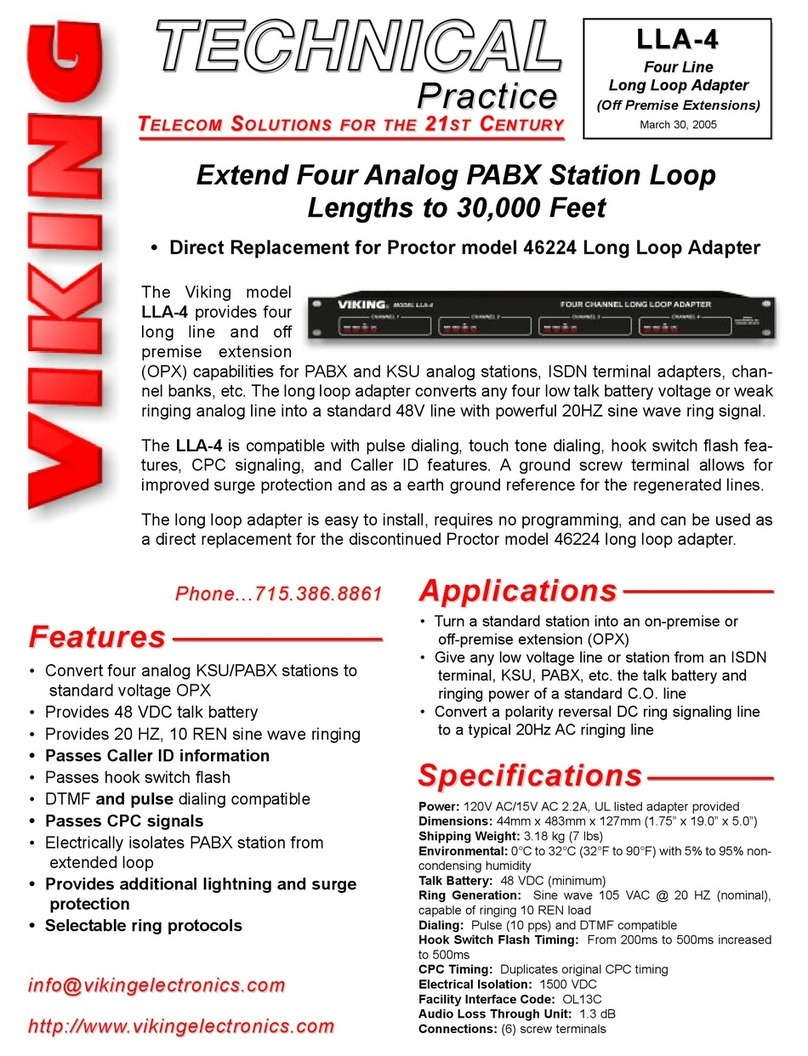
Viking
Viking LLA-4 Instructions for use
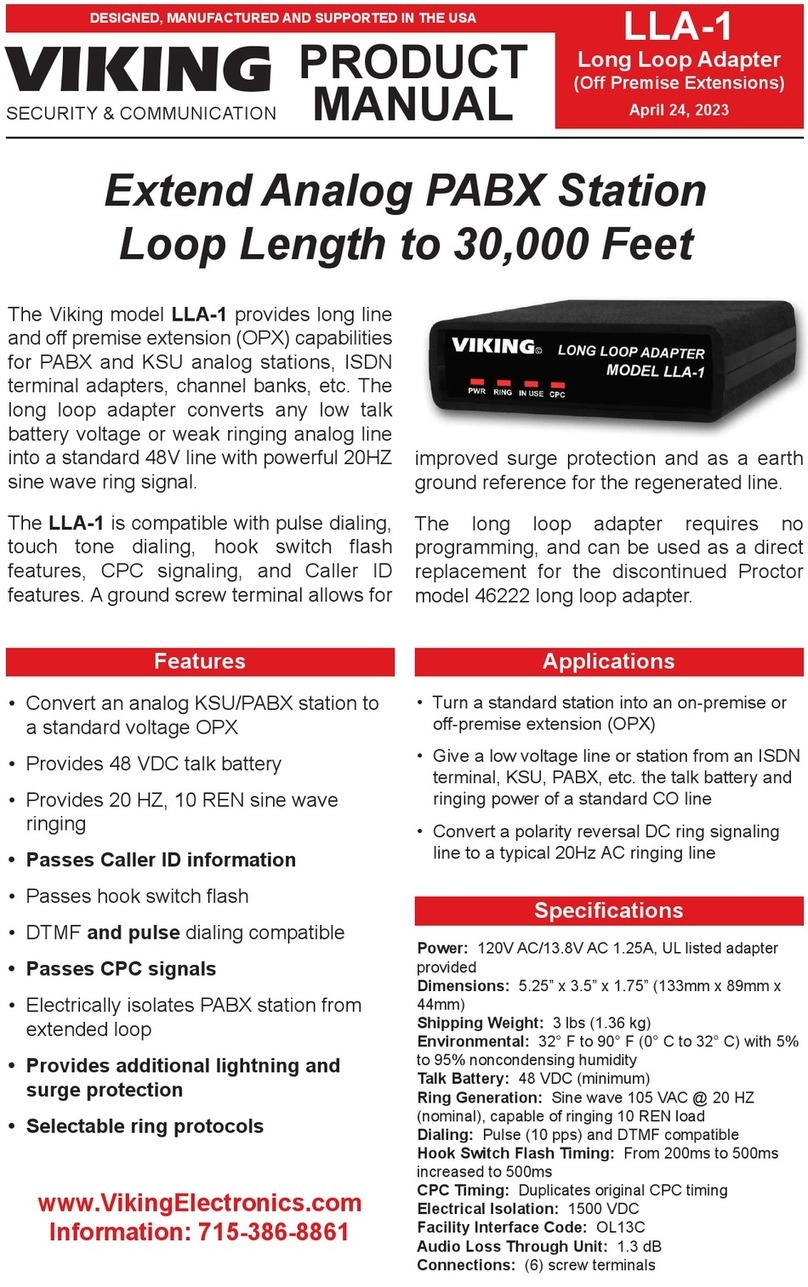
Viking
Viking LLA-1 User manual
